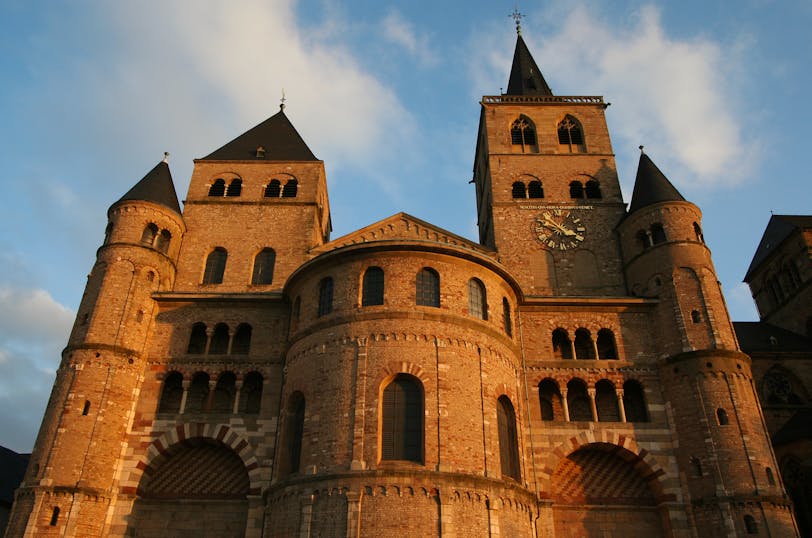
Happy New Year! On January 2 we drove down to Trier, which is southwest of us and close to the Luxembourg border. We have been there before (during a 2005 Christmas trip), but we missed a few things and it deserved a repeat trip with better cameras. And the weather forecast was clear and sunny, though it turned out more like partly cloudy. And cold - barely above freezing. Still, we had a very nice time!
We started out at St. Matthias' Abbey, which is on the southern outskirts of the city beyond walking distance. (But buses go there from the center, and there's a free car park across the street.)
The abbey church was interesting, with some nice Romanesque architecture and the reputed relics of Saint Matthias, the apostle chosen to replace Judas. There's a marble effigy of Matthias at the front of the church, with his bare feet charmingly sticking out of his robes, and his relics are in a small stone sarcophagus in the crypt.
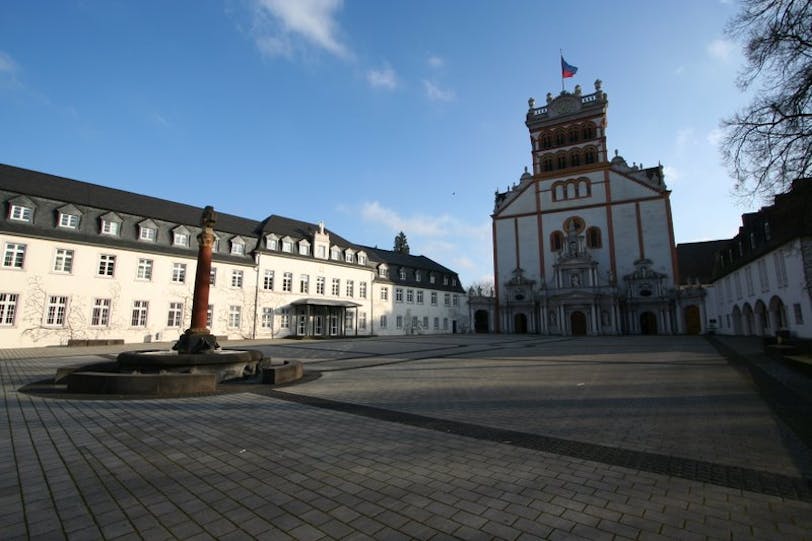
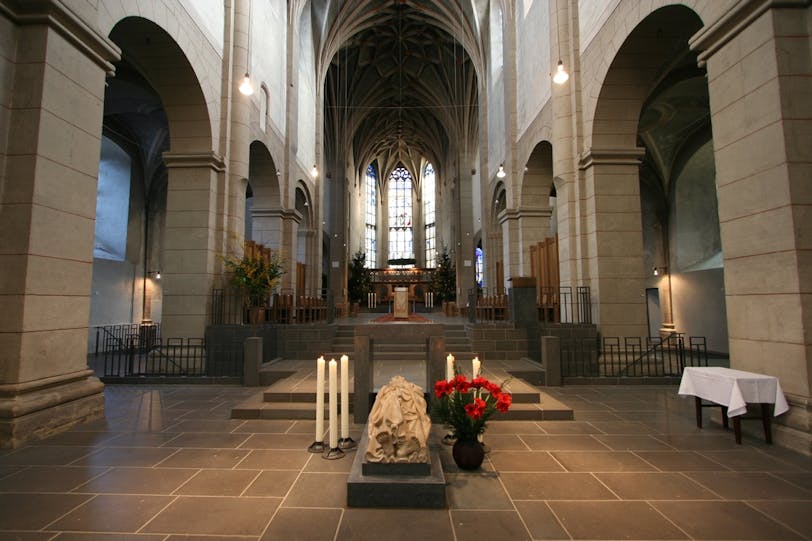
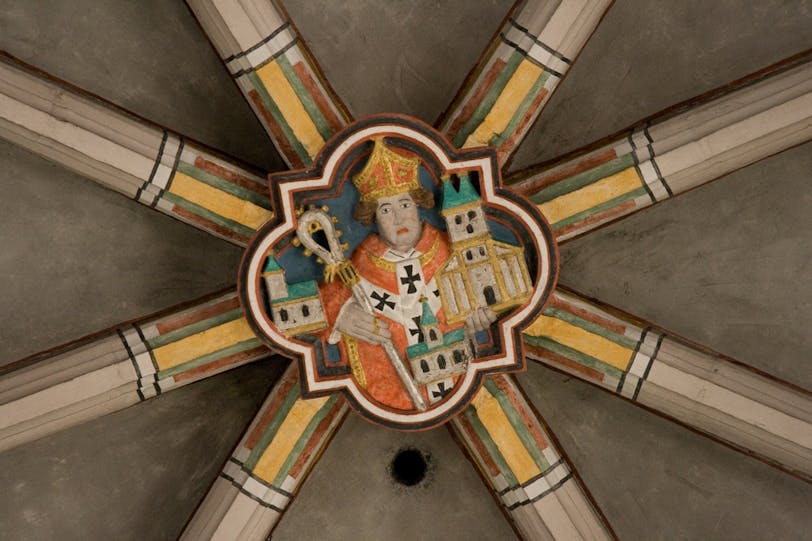

Then we found parking in the city center, in an underground garage by the Konstantin Basilika - a Roman throne hall built in 310 and used by Constantine (he became emperor in 312). It is now used as a Protestant church. Sadly it was locked so we didn't get to see the inside again.

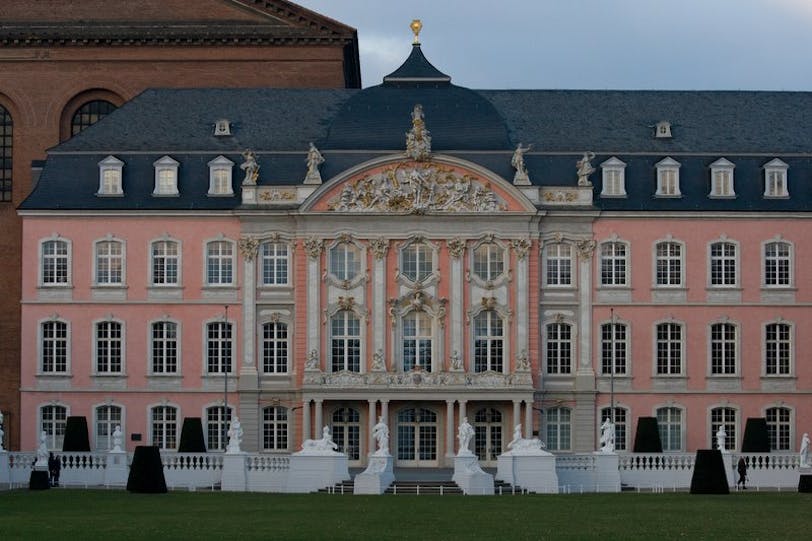
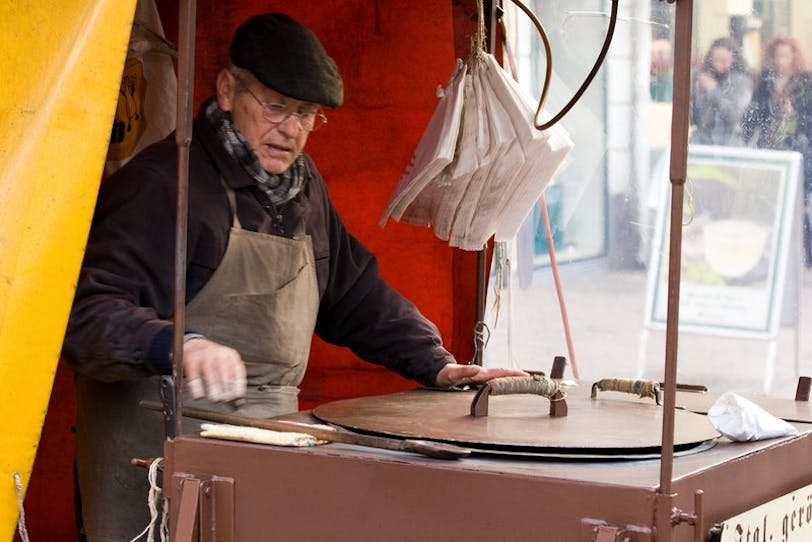
We revisited the cathedral, its treasury, and its cloisters, all of which were as interesting as we remembered. I think I enjoyed it more this time because now I appreciate Romanesque architecture a lot more. Last time I was focused entirely on the connections with Constantine (of which not much remains).


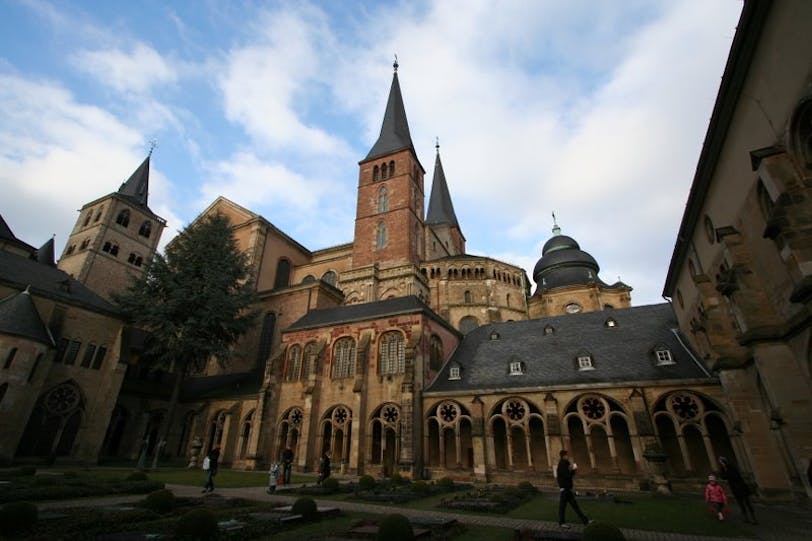

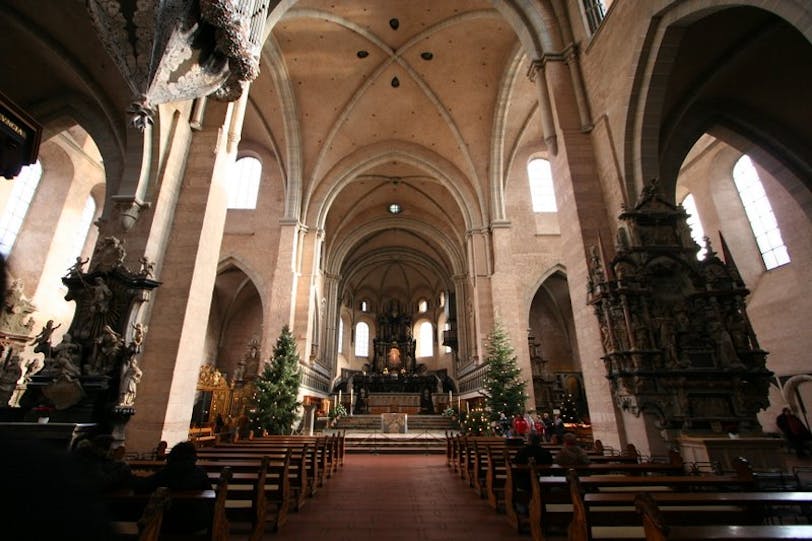
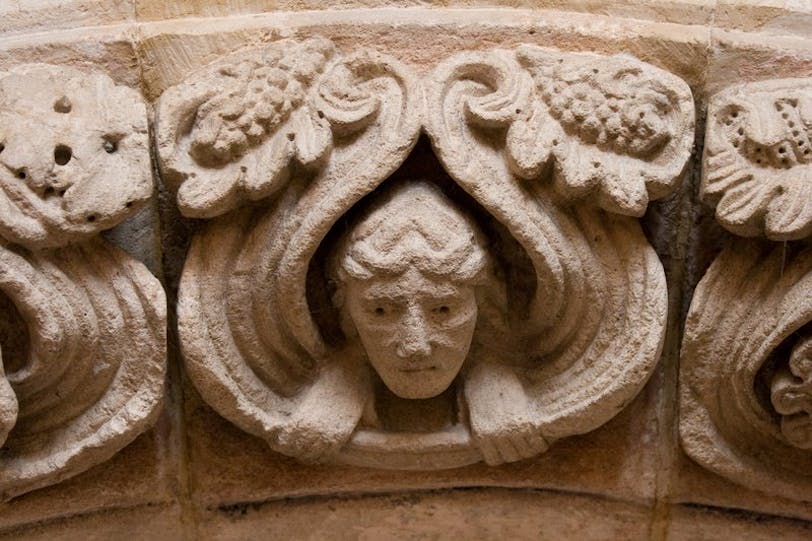
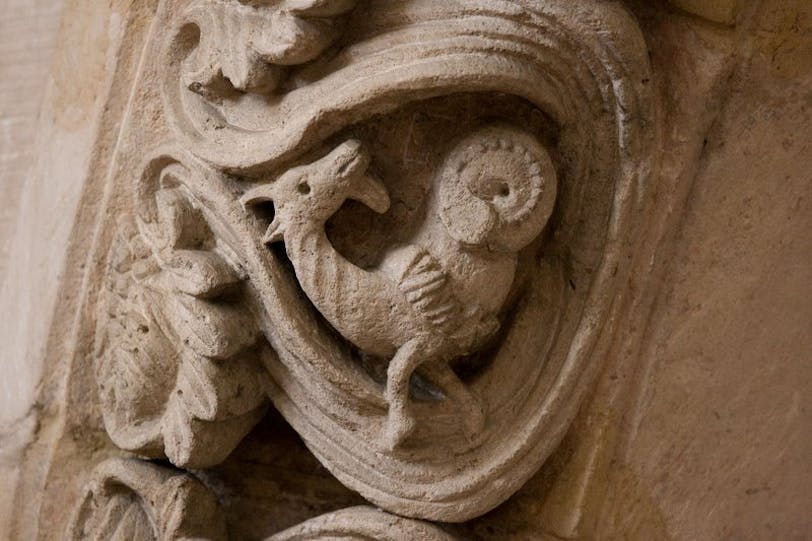
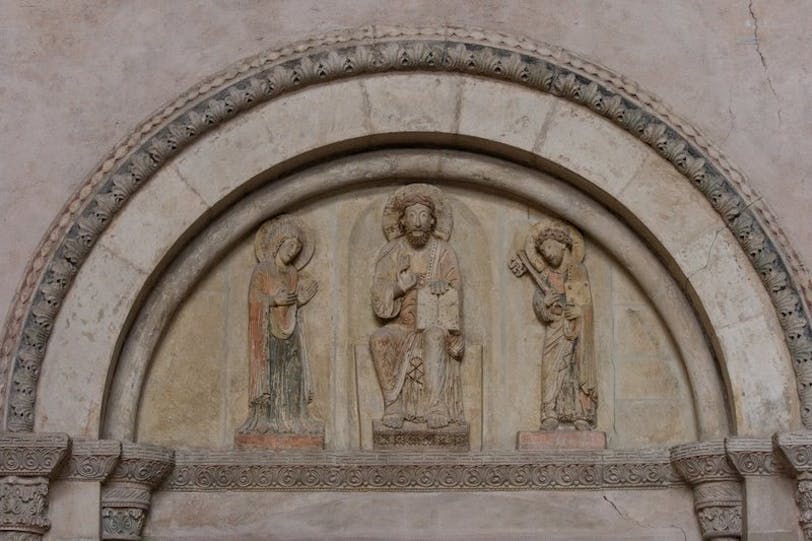
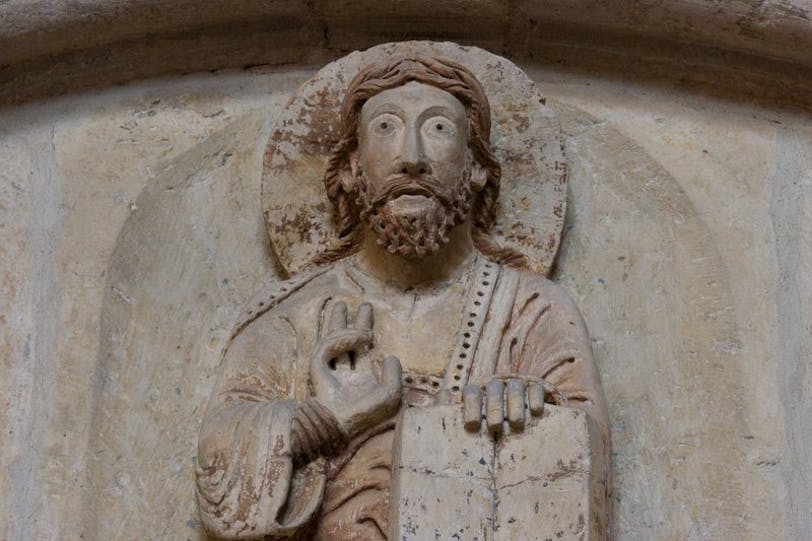
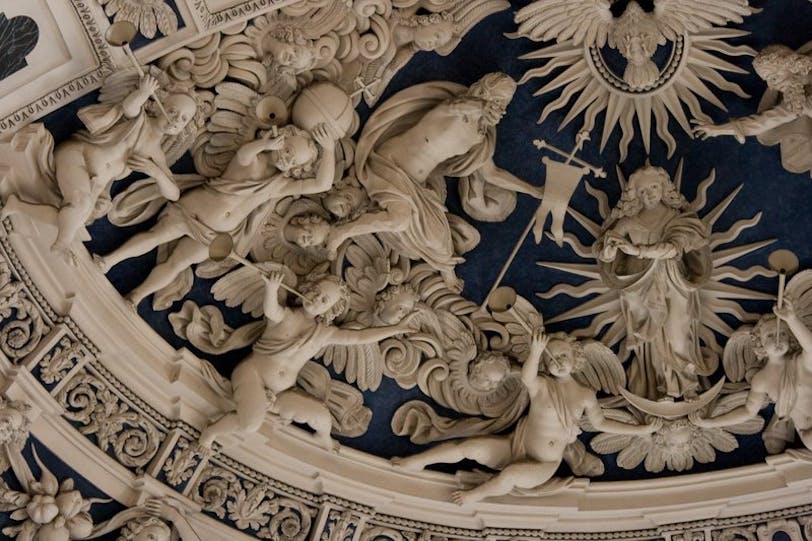
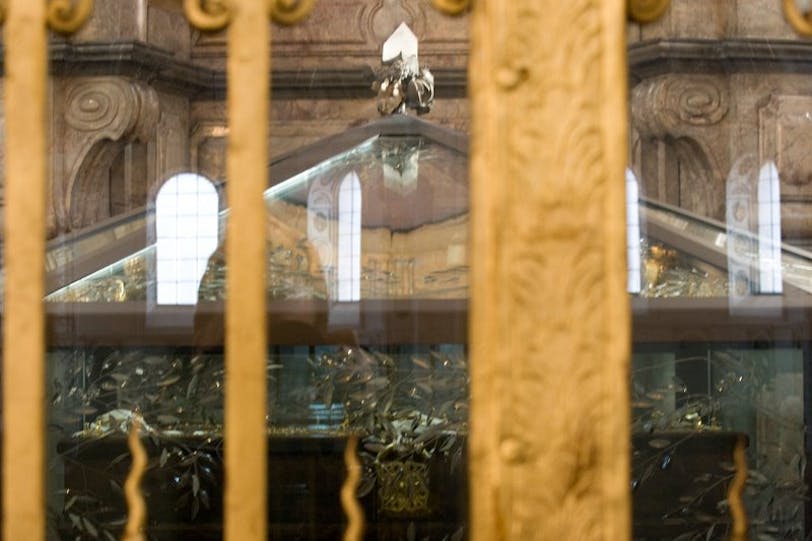
Next we searched out the Diocesan Museum back behind the cathedral. This was one of the sights I was sorry I missed last time and turned out to be one of the greatest highlights of our trip. We had the place entirely to ourselves AND we were allowed to take pictures!
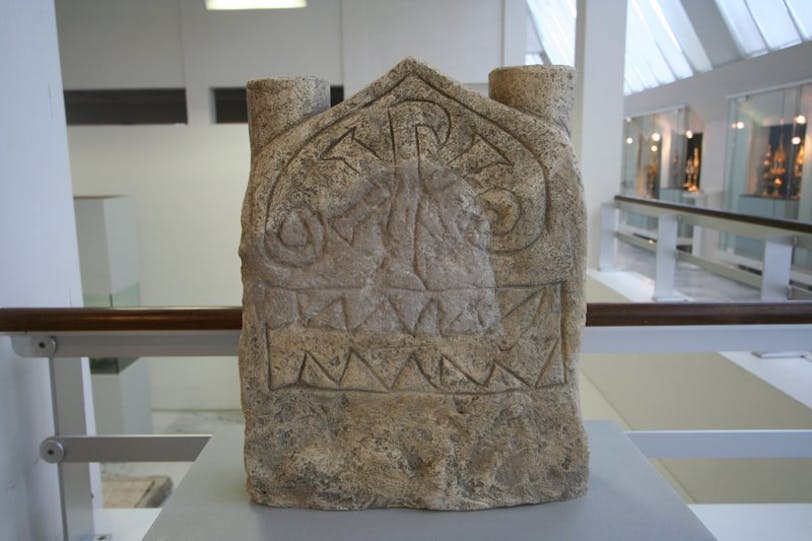

The pride of the museum and the main attraction for us was a set of Roman frescoes that were discovered beneath the cathedral. They once adorned the ceiling of the imperial palace, where Constantine's mother lived. They had fallen onto the ground in 70,000 pieces and were painstakingly put back together like a puzzle. (Incidentally they sell a puzzle of the frescoes and we almost bought one.)

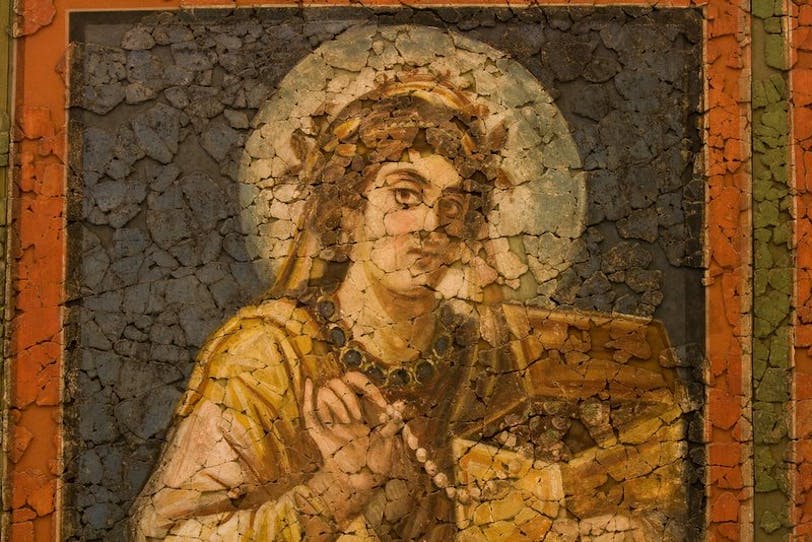

From there it was on to the Porta Nigra before it got dark. This is a huge Roman gate that was saved from destruction thanks to a monk named St. Simeon moving in and its later transformation into a church and monastery.
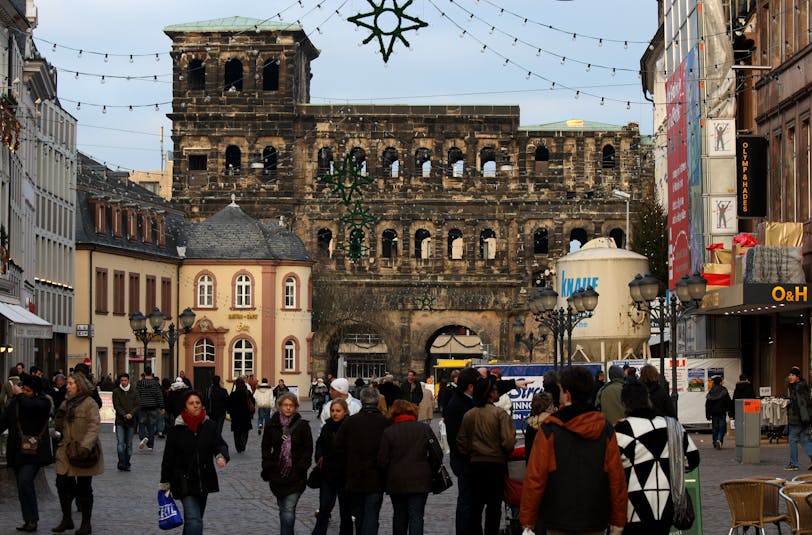
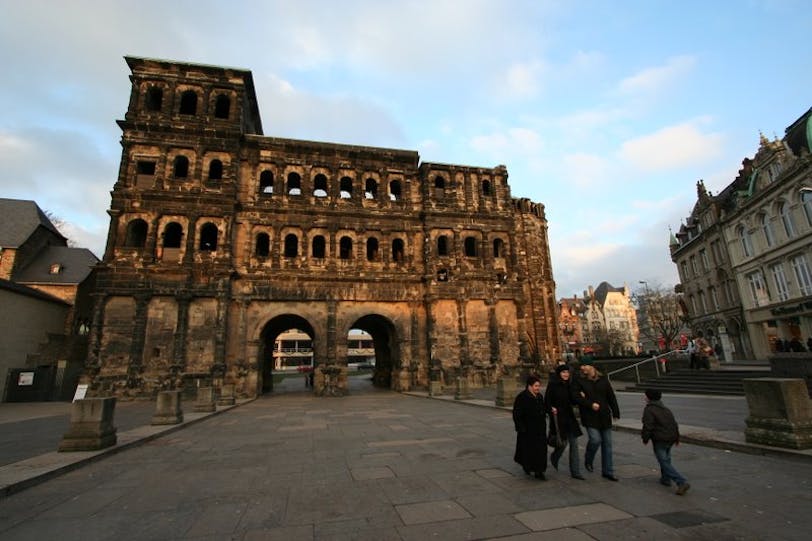

We checked out the Stiftsmuseum (Monastery Museum) next door, but it was both more expensive and less impressive than the other museum.
 It did provide a nice view of the cloisters.
It did provide a nice view of the cloisters.
 And the exhibits included an interesting newspaper rejoicing in the success of Adolf Hitler...
And the exhibits included an interesting newspaper rejoicing in the success of Adolf Hitler...
 ...and a model of Trier after World War II. Note how well the cathedral did (just left of center), losing only one spire. The church next door was not as lucky.
...and a model of Trier after World War II. Note how well the cathedral did (just left of center), losing only one spire. The church next door was not as lucky.
By that time the sun was down and it was time to find dinner. Amazingly, it was the first time we've eaten out in Germany since we've lived here, and we knew exactly what we wanted - the same restaurant we ate at last time we were in Trier. It's called Kartoffel Kiste and has a menu centered around delicious potato dishes.
We both had Kartoffelaufläufe, which is essentially potatoes au gratin but better than any we've ever had. The potatoes are cooked perfectly, the creamy sauce is divine. I had Kartoffelauflaufe "Hawaii" (pronounced "have-EYE") and David had his with chicken and broccoli. They were to die for! And certainly also to die of, if you have them on a regular basis.
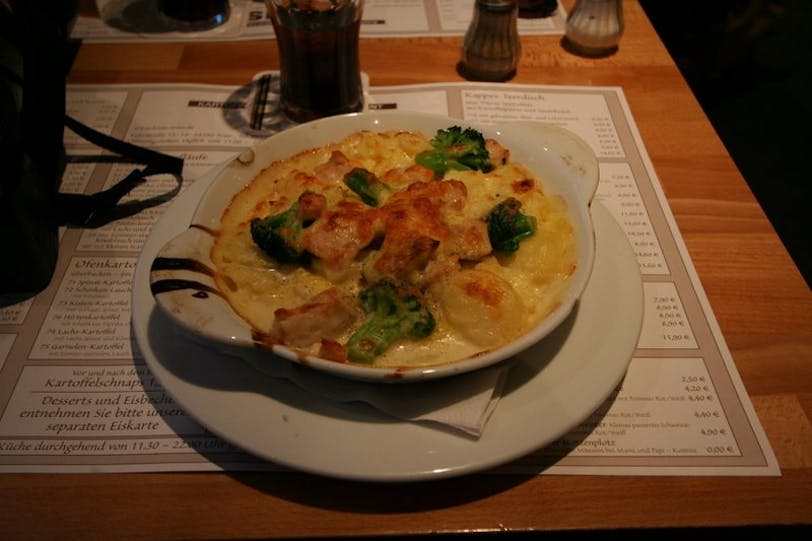
The rest of the week has been uneventful, except that we have a couple new additions to the camera family! We bit the bullet and bought the next-level Canon (40D) and a 50mm prime lens. The big advantage of both is that they perform better in low light, which we have had trouble with lately in dark churches.
Today we took the new toys over to the Schwarzrheindorf Double Church and tried them out on the murals. They did GREAT! I'm thrilled. I'll post a few photos from today's trip when I get a chance.
The Go Historic Blog documents travels to historic places, along with news and features related to history, architecture, & art.
